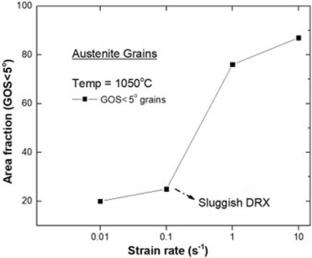Hot Deformation of Constituent Phases in 2101 Duplex Stainless Steel and Its Modeling Using Artificial Neural Network
Abstract
The present study deals with the hot deformation behavior of a Fe-21Cr-1.5Ni-5Mn duplex stainless steel (DSS). Uniaxial hot compression tests were performed at various strain rates and temperatures. Electron backscattered diffraction was used to characterize the microstructure. The microstructural analysis revealed that the restoration mechanisms that act are different in the ferrite and austenite phases. The ferrite phase first undergoes dynamic recovery followed by the dynamic recrystallization (DRX). However, the mechanism of DRX in the austenite phase depends largely on the strain rate. An artificial neural network (ANN) model was developed with two hidden layers to model the flow behavior of DSS. The stress–strain data of the uniaxial compression tests were used to train the ANN model. The number of neurons in the model was optimized to increase its accuracy. A comparative study between the ANN model predictions and the constitutive model (Arrhenius hyperbolic sine method) predictions showed that the ANN can predict the stress values for any set of strain rates and temperatures. The constitutive model finds it difficult to predict values at higher strain rates and lower temperatures. It was found that the accuracy and precision of the ANN model were much higher than that of the constitutive model.


 求助内容:
求助内容: 应助结果提醒方式:
应助结果提醒方式:


